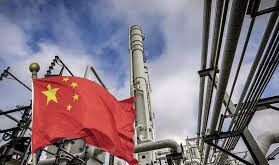China is racing toward decarbonization at a rate that few could have predicted. The nation is crushing its competition in terms of clean energy spending, and Bloomberg recently described that a frenzied air of enthusiasm about solar power and electric vehicles in China that “suggests China is nearing an inflection point in its energy transition more than a half-decade before a 2030 target to peak emissions.” To be certain, China is still burning more fossil fuels than almost any other country on Earth, but its turbocharged clean energy sector bodes well for a cleaner future for the nation and the world.
Just last week, BloombergNEF considerably increased its forecast for China’s 2023 solar installations, projecting that Beijing will increase its solar capacity addition nearly threefold compared to two years ago – an addition greater than the entire total in the U.S. EVs have also taken off in the Chinese market: more than a third of all vehicle sales in China last month were electric, according to Bloomberg. By comparison, EVs make up just 4% of new car sales in the U.S.
According to recent figures from a BloombergNEF analysis, Beijing alone was responsible for nearly half of all renewable energy spending on the planet last year at a whopping $546 billion USD. That’s nearly quadruple the $141 billion that the U.S. spent on clean energy, and 2.5 times more than the $180 billion spent by the European Union, which were the next biggest spenders compared to China. China’s intensive spending on the sector has paid off; the country’s clean energy sectors are now robust enough that they no longer need heavy government investing to stay afloat, and these industries are now dominant on the global stage.
Beijing’s runaway spending on renewable energy production capacity as well as manufacturing and supply chains for vital clean energy and EV components such as solar panels and lithium-ion batteries has put them in a very strong position in the global energy sector. Back in 2020, Barron’s was already reporting that “China has become the center of gravity for global energy markets,” and Beijing’s energy influence and production capacity has only continued to skyrocket since the time of that report.
Through energy infrastructure programs such as the massive Belt and Road Initiative, China has massively increased its power in markets around the globe. By loaning money to governments around the world and investing heavily in emerging energy markets, Beijing has simultaneously increased its own energy security while also significantly expanding its global influence, particularly in developing countries ranging from Africa to Latin America.
Through monopolizing key clean energy supply chains, Chinese manufacturers have also made themselves indispensable in the clean energy transitions planned by the United States and Europe, among other key economies. According to the International Energy Agency’s Energy Technology Perspectives 2023 report, “China is the leading global supplier of clean energy technologies today and a net exporter for many of them. China holds at least 60% of the world’s manufacturing capacity for most mass-manufactured technologies (e.g. solar PV, wind systems and batteries), and 40% of electrolyser manufacturing.”
This means that while the U.S. and Europe are endeavoring to support homegrown solar, wind, and EV companies, those companies will still have to source their supplies from China. Re-shoring supply chains for components like solar panels and EV batteries will take time and money, and relying on much cheaper and more established Chinese value chains makes far more economic sense as these companies try to get off the ground.
The United States has recently tried to push through policy measures requiring companies to source their supplies locally if they are to qualify for support under the Inflation Reduction Act, but clean energy companies have argued that this will hurt the transition more than it will help. “Directly and indirectly, the US will rely on supply from China,” Pol Lezcano, a senior associate at BloombergNEF, was recently quoted by the Financial Times. “This guidance may encourage more cell manufacturing to take place in the US, but most of the cells used in US solar projects will continue to come from . . . factories in south-east Asia, most of them owned by Chinese companies.”
While there are valid concerns about China’s dominance and increased geopolitical and economic leverage in the global energy sector, there are also some considerable benefits to Beijing’s clean energy spending spree. Bloomberg reports that China is nearing the “tipping point where fossil fuel use falls into long-term decline, a milestone that could be reached as soon as next year.” China’s decarbonization is essential to global climate goals, as the country is the biggest emitter of greenhouse gasses in the world, responsible for about 30% of global emissions, with more than 10,065 million tons of CO2 released.
Of course, there will be some bumps in the road to decarbonization. The breakneck pace of acceleration in solar panel manufacturing, for example, has outpaced demand and could lead to some considerable market disruptions as panels plunge in price. Furthermore, major grid infrastructure investments will be needed to accommodate all of the new variable electricity. Finally, ending China’s relationship with coal will be a very tall order. Historically, coal is associated with energy security in rural China, and an ideological transition will be necessary alongside the economic transition. Lucky for China, authoritarianism allows for unilateral economic and industrial shifts at a pace that the West can only dream of.

 Iran Energy News Oil, Gas, Petrochemical and Energy Field Specialized Channel
Iran Energy News Oil, Gas, Petrochemical and Energy Field Specialized Channel



